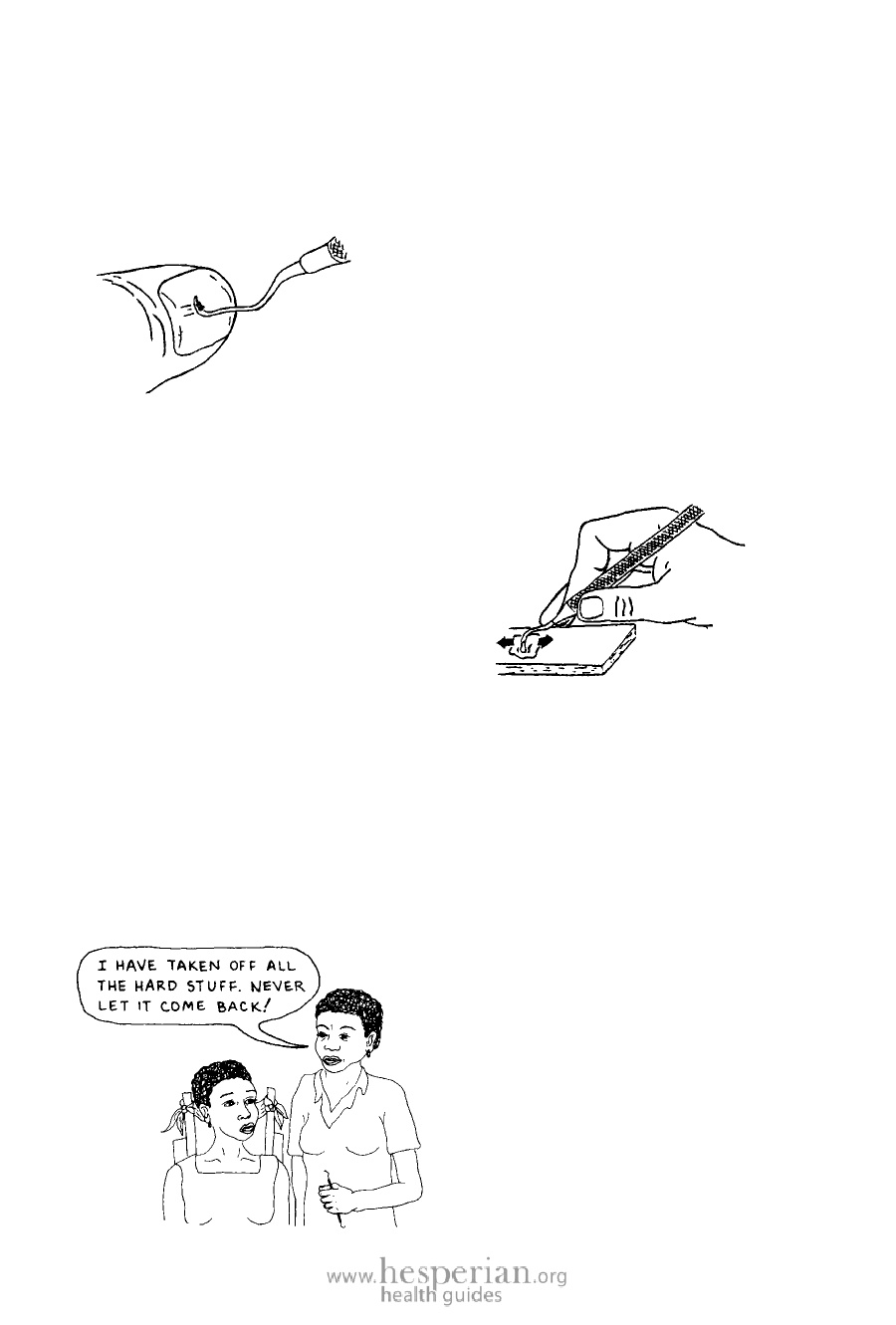
134 Where There Is No Dentist 2012
KEEP YOUR SCALING INSTRUMENTS
sharp AND CLEAN
A sharp scaler bites into tartar better than a blunt one. Sharpen the edge
whenever you feel it sliding over the tartar.
From time to time, feel the cutting edge to be
sure it is sharp.
Scrape it against your fingernail. If the cutting
edge is not able to cut your nail, it will not be
sharp enough to break the tartar free.
Sharpen the cutting edge of the scaler on a fine-grain stone (Arkansas
stone). Put a few drops of oil or water on the stone first, so the scaler
can slide against it more easily.
Rest your 2nd or 3rd finger against the side
of the stone. This is for control.
Rub the cutting edge against the stone. Move
it back and forth.
Turn the round scaler as you sharpen it. This
helps to keep the scaler’s round shape.
Scalers must be more than clean—they must be sterile. This is because
there may be spots of blood on them. Hepatitis (Where There Is No Doctor,
page 172) and other diseases can pass from the blood of one person to the
blood of another person. To learn how to sterilize, see pages 87 and 88.
Your mirror, probe, and canon tweezers do not need sterilization. A
disinfectant (see page 89) will clean them. Dry all the instruments with a
towel. Then wrap them inside a clean cloth and put them in your scaling kit.
They are now ready for use whenever you need them again.
Remind each person: scaling is not
a cure. Rather it is a way of giving
her a new start. Only she can give
herself the care she needs to keep
her gums healthy. You have removed
the hard material from her teeth,
and if she brushes carefully, the
tartar will not return!